When giving pickleball tips and advice, it's fun to discuss shot selection and techniques like Ernes and backhand flicks – the flashy stuff that gets you the "oohs" and "ahhs" when out on the court.
But, an often overlooked part of the game – particularly doubles pickleball – is also one of the most important.
And that is your spacing.
We'll discuss how spacing, especially at the non-volley zone (kitchen) line plays a massive role in every single pickleball match you play.
Why spacing matters in pickleball
Spacing between two players can either create or limit opportunities – not just for the opposing team, but for your team as well.
Too much space
Leave too much space and your opponents can hit an easy putaway or force you to reach for the next shot. A lot of popups happen due to players reaching.
Too little space
When you don't leave enough space you limit your range, making it harder to get to balls down the sideline. You can also encroach on your partner and end up clanking paddles or knocking one another over.
Note: Potential risk of injury aside, leaving too little space is almost always better than leaving too much space, because it forces a harder shot for your opponents.
How your spacing affects your opponents
Besides the obvious reasons, there are visual reasons why you want to continuously give you and your partner correct spacing. When your opponents see that you are leaving areas of the court wide open, they can build a game plan to take advantage of that.
On the flip side, if they don't see those gaps, it may apply pressure because they know they'll need to be more precise with their shots.
How spacing affects you and your partner
Again, leaving the obvious aside, a tangential benefit of having good spacing is that it gives you and your partner the confidence to attempt better shots.
For example, if you have a partner who doesn't move with you to the sideline, then it's a mistake to attempt an Erne. An Erne requires you to take yourself off the court and you need your partner to cover your space for you if your opponent doesn't give you a good look.
Also, you may hesitate to hit speedups against your opponent if you have a partner who doesn't fill the middle gap well enough. Most speedups these days are countered, and most counters (we know this because of the triangle rule) will go toward your partner.
Want Faster Hands in Pickleball? Follow the Triangle Rule
Busting out a speedup during a dinking rally used to win you the point in pickleball. Not so much anymore. In fact, coaches now teach players to expect the speedup first instead of a dink so they are better prepared for a counter. Extended dinking rallies, except at the top
 The Dink PickleballJason Flamm
The Dink PickleballJason Flamm
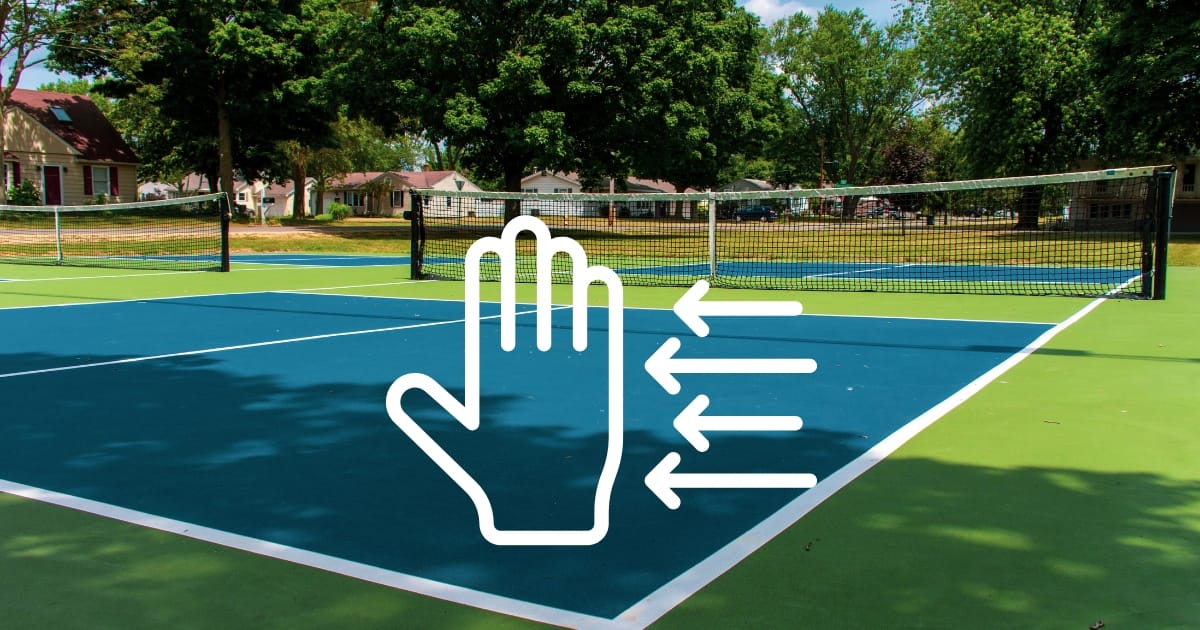
If your partner isn't there, then speeding up can be a losing shot.
How to create better spacing
There are two things that are essential to understand about creating better spacing with your partner.
- When your partner is moving laterally (side-to-side), you almost always want to move with them
- Second, you and your partner should follow the ball – not just with your eyes, but your torso (and paddle)
Let's tackle number one first.
Moving laterally with your partner
Vertically moving with your partner (like after a third shot) is a topic for a future article.
Here, we are speaking about lateral movements – those typically caused by crosscourt dinks.
Many people, when their partner is pulled out wide, don't move at all.
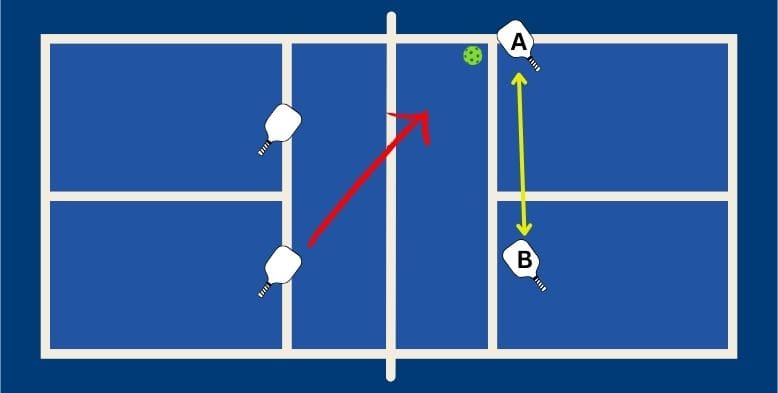
In the diagram, you can see that player B has chosen to not move with their partner, which causes extra space to open in the middle.
If you compare this to this diagram:
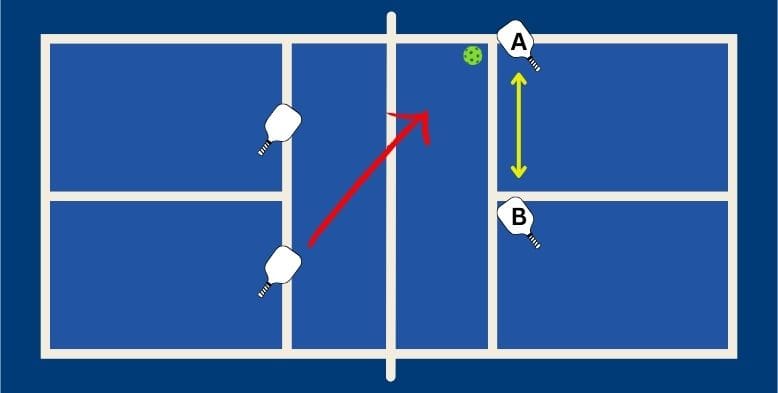
When player B moves just a few steps, covering the "T" (where the center line and kitchen line meet), they leave less space open.
This is important because if player A takes the ball back crosscourt but leaves it a little high, then your opponent will have more space to hit a potential winner through.
When your partner is pulled wide, you should "Guard the T" until your partner has time to get back into their position, at which point you should move back over.
One concept you can visualize is that you and your partner have a giant rubber band attached to your hips. If that rubber band gets too taut (meaning you are too far apart), it could snap. You also don't want it to get too loose (meaning you are too close).
You can see this concept played out in a video from Selkirk TV here:
Tracking the ball together
The second part of creating better space with your partner is something almost no rec players do, but you see high-level players and pros do it all the time.
They "track" the ball.
What does this mean?
When a ball is hit down the middle, consider that neutral. You and your partner should be in your respective positions on the court (see diagram).
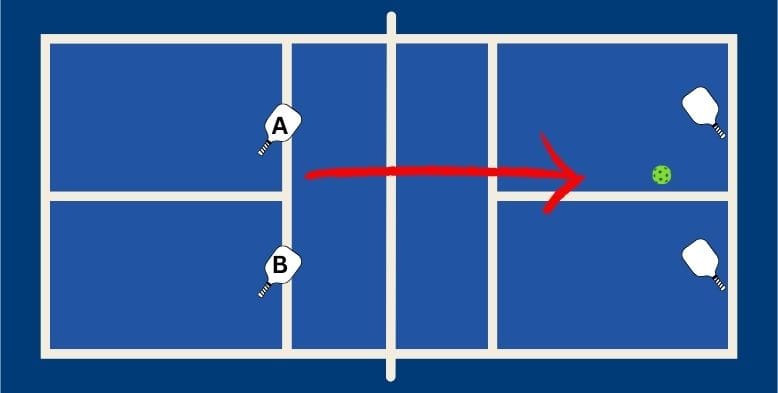
Players A and B are at the center of the kitchen line on a ball that's hit in the middle.
However, when a ball is hit crosscourt or down the line, both players need to move their positioning toward that ball.
Think of it like a funnel (see diagram).
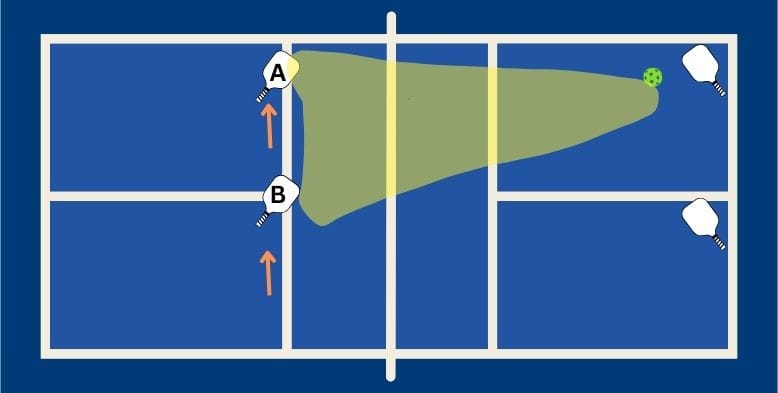
This movement needs to occur because the return crosscourt has given your opponent specific angles to drive the ball through. So, you need to be in a position to better defend against those angles.
Want to Play Better Pickleball? Hit Them Angles
Ever wonder when you’d put those geometry classes to good use? We highlight the importance of angles in pickleball and how to use them to your advantage.
 The Dink PickleballJason Flamm
The Dink PickleballJason Flamm
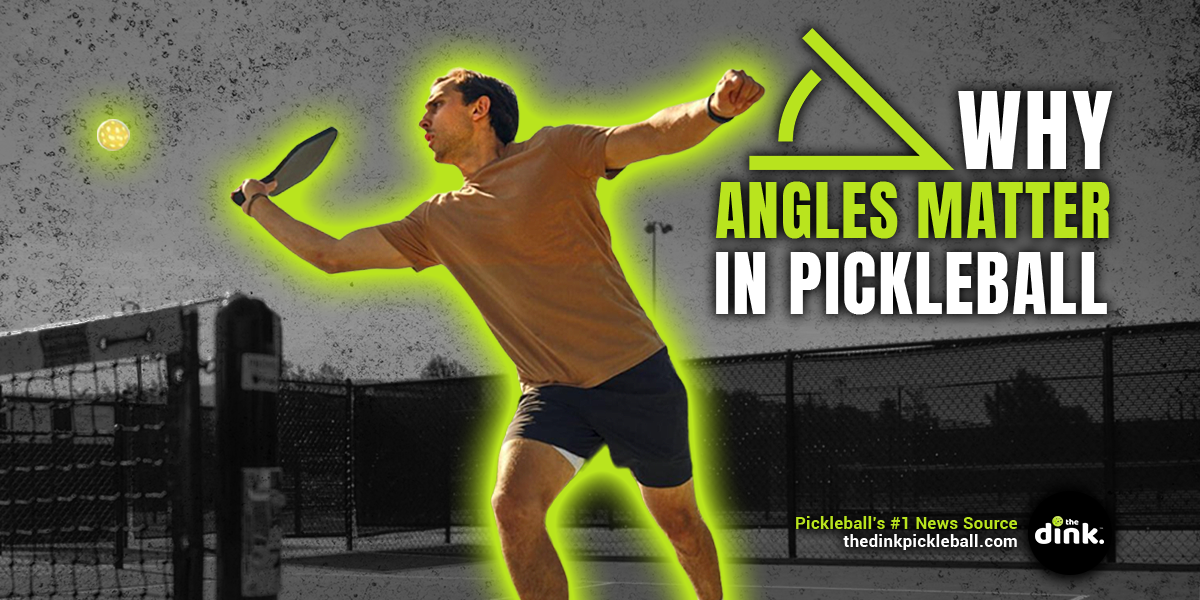
If you and your partner were to stay in the previous position on a ball that's hit crosscourt, then you have now given an advantage to your opponent.
This diagram shows why:
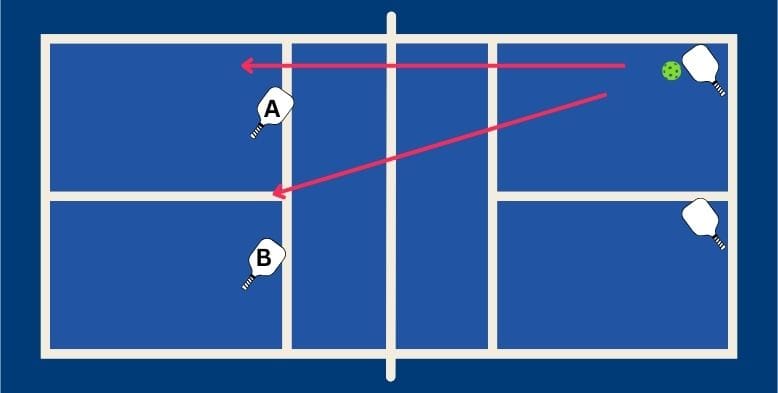
Your opponent can drive the ball down the sideline or through the middle. Both areas are currently vacant and would require you or your partner to move to defend a hard-hit ball.
Which is always tougher than defending a ball when you are stationary - like in the previous example.
How much space should you leave?
The amount of space you need between you and your partner is dependent on several factors including,
- How mobile each of you are
- If one player is being targeted more than the other
- Which handed each player is (when two forehands are in the middle, you can leave more room there)
Ultimately, figuring out how much room to leave between you is about each player's strengths or weaknesses. If you are someone who prefers to use your backhand and have good range with it, then you might leave more space on that side of your body.
The actual amount of space will vary between partners, and you may try different spacing throughout a match until you find what works best.
If you have a regular partner, it shouldn't take the two of you long to work it out.
What to do if your partner just doesn't get it
There are times when we are playing next to someone who either can't, doesn't know how to, or even refuses to move with us.
That's okay.
When you're playing next to someone like that, the best thing you can do for yourself and your team is to limit the types of shots you take.
Why You Play Better Pickleball Against Good Players
Why do you seemingly play better pickleball against better competition? We share some of the main reasons why and how it helps your game.
 The Dink PickleballJason Flamm
The Dink PickleballJason Flamm
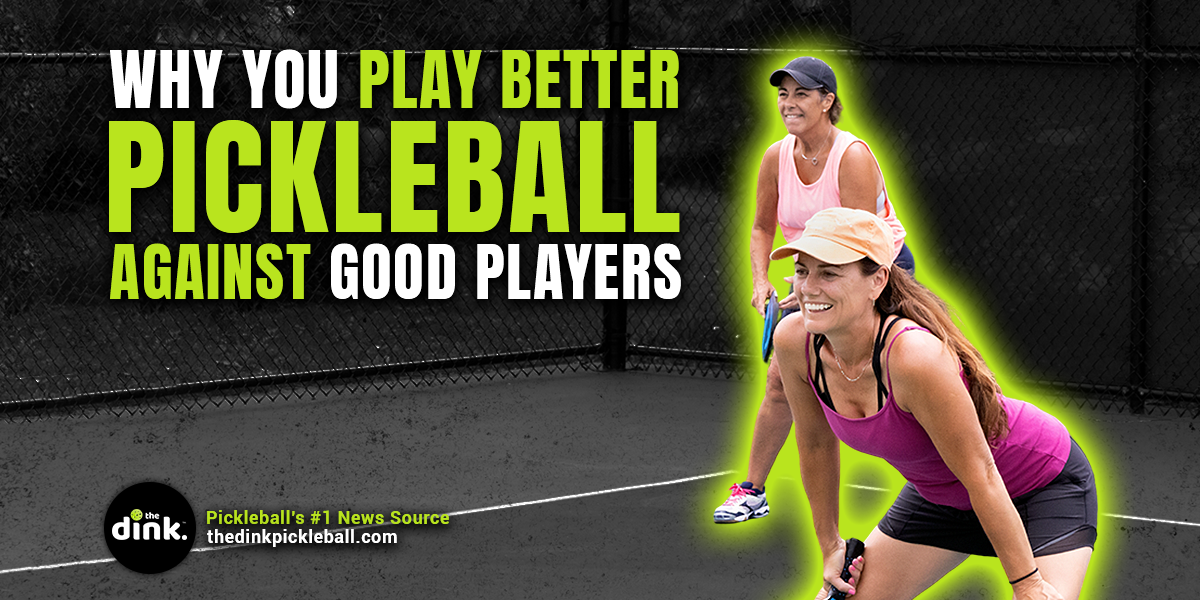
No Ernes
Earlier, we spoke of the Erne. Do not attempt Ernes when you have a non-moving player as your partner.
Instead of hitting Ernes, reset the ball in the middle or attempt a speedup that you plan on "cleaning up" yourself. After you hit the speedup down the line, slide over immediately to protect the middle and counter your opponent's shot.
Limit crosscourt shots
Dinks, drops, and returns should all be hit toward the centerline. Angling your shots crosscourt puts your team at a disadvantage because your partner won't be tracking the ball with you. There will be too much space open and you can't possibly make up for it all by yourself.
Everything should go toward the center.
Bait your opponents
If you notice a big gap between you and your partner, you can guarantee that your opponents notice it too. You can take advantage of this by baiting them into hitting balls into the open gap.
One way to do this is to leave a dink up (just slightly) that they can attack. However, after you leave it up, slide toward the middle of the court while keeping your paddle out in front of you. Once they take the bait, you should be standing right there with your paddle face ready to strike down on the ball.
Pickleball Skill Quiz
Find out your pickleball rating
 Pickleball Skill Quiz
Pickleball Skill Quiz

Anuncie Aqui / Advertise Here
Sua marca para o mundo Pickleball! / Your brand for the Pickleball world!

 English
English  Spanish
Spanish  Portuguese
Portuguese  German
German  Italian
Italian  Japanese
Japanese  French
French  Polish
Polish  Russian
Russian  Netherlands
Netherlands  Hungarian
Hungarian  Turkish
Turkish  Videos
Videos 
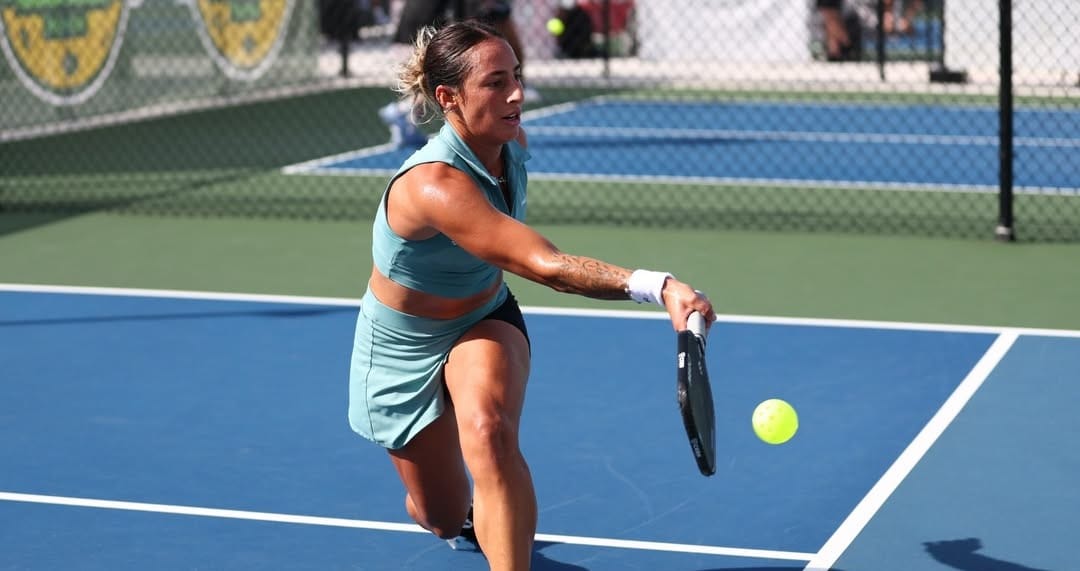
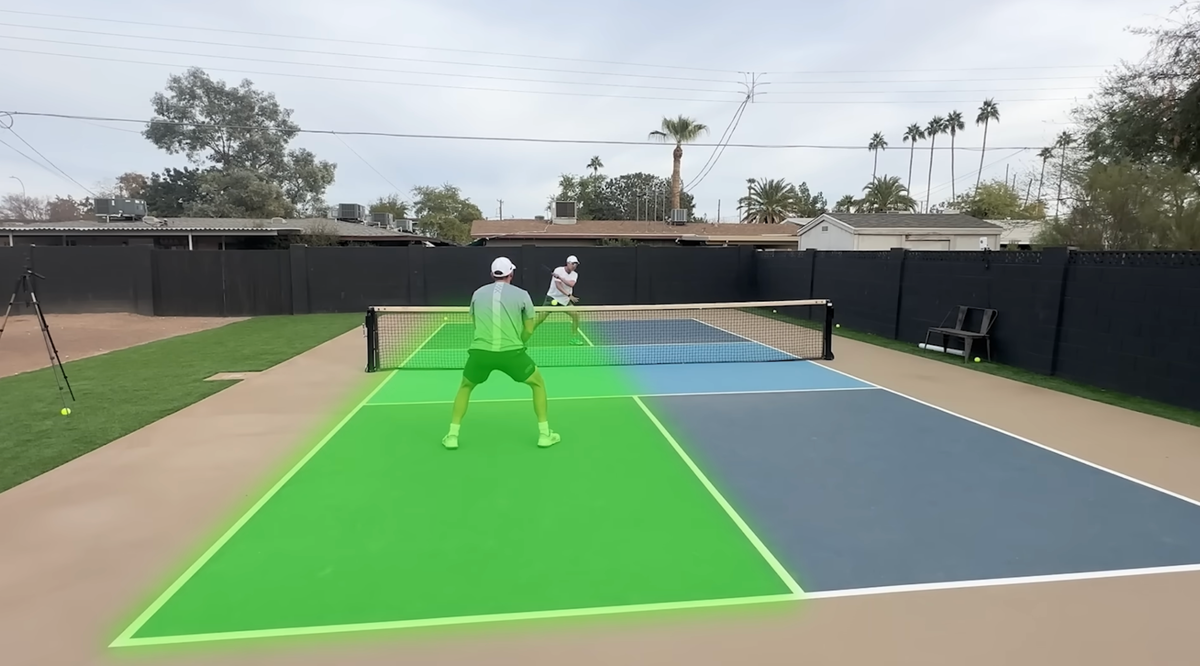
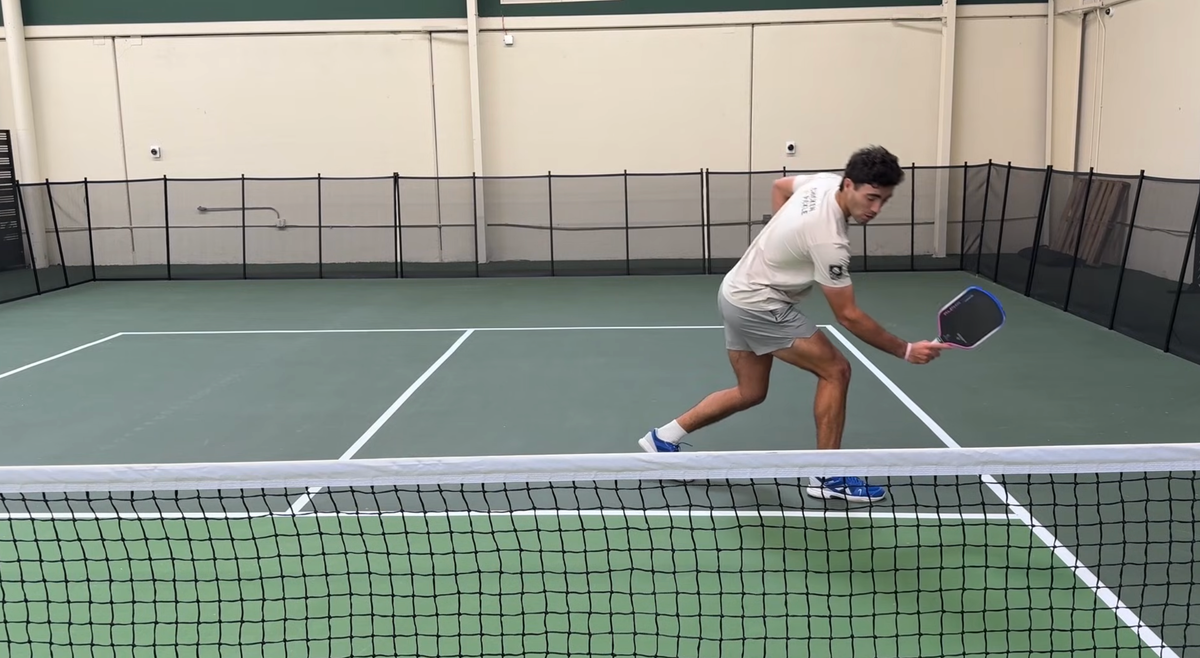
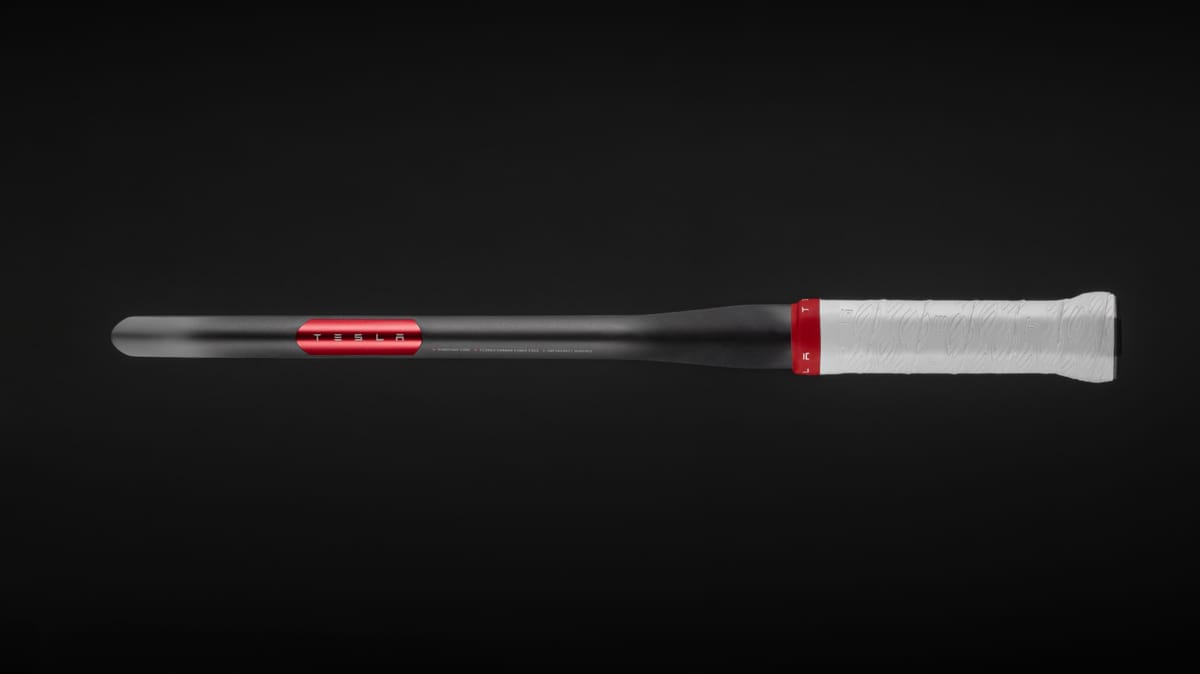




 English (US) ·
English (US) ·  Portuguese (BR) ·
Portuguese (BR) ·